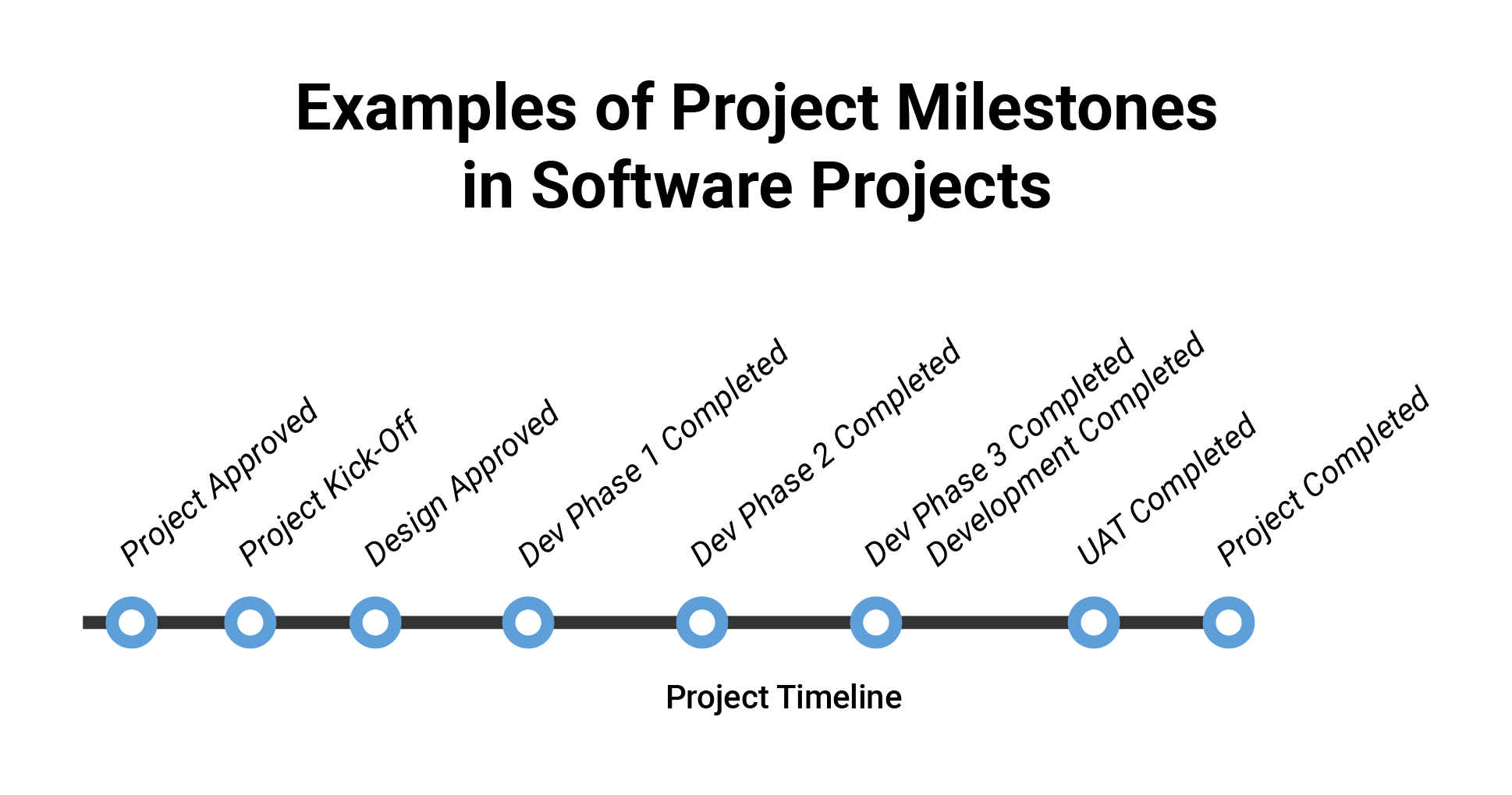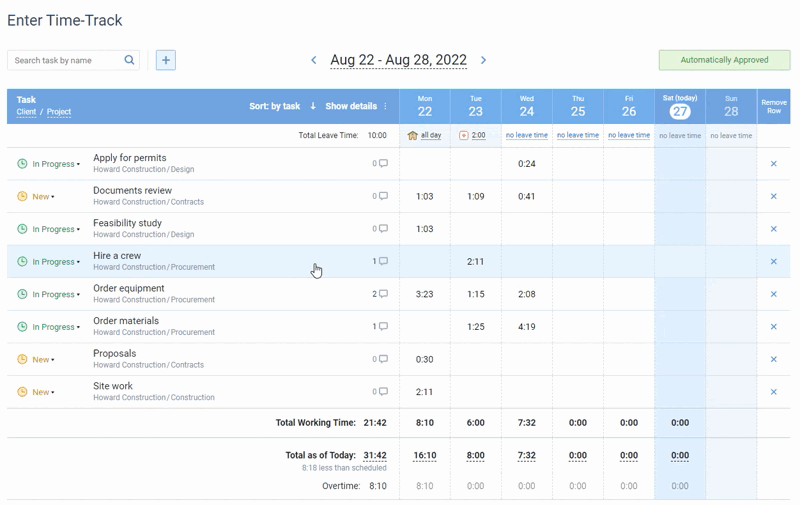
When managing a project, it’s essential to bring structure to its process for you and your team. By creating a schedule or choosing a model that everyone can follow, you are raising your chances that everyone will remain productive and organized so your project is completed on time.
As you choose the best scheduling strategies for your project, you are making its deliverables more achievable. When you create your project schedule, you arrange task completion deadlines logically and within realistic timeframes, for your team members to work on them meticulously and efficiently. With proper planning, your project will have fewer errors than it would if left without structure.
When creating your schedule or shaping your model, you will want to analyze your project’s scope and all deliverables required. Considering your resources, like your project team members, you can define deadlines throughout your timeline. Beyond task deadlines, you will need to determine your project milestones.
What Is a Project Milestone?
Project milestone is a project planning tool that marks an important achievement on the way towards the project completion. Here are a few examples of project milestones used in software projects to help you grasp the idea:

A project milestone is an effective way to break down your project process so you can make sure all of your stakeholders’ requirements are being met as your team members submit their completed tasks. When you define milestones in your project, you create major phases in your project scheduling, which signify its progress as your team finishes a particular group or category of tasks. As you pass every milestone, you can be sure your project is on track to your final project submission date.
Your milestone groups will also determine if any lags or significant issues are arising. Rather than facing these obstacles near the end of your project, close to the final submission date, you can address them within your project milestone. That way, as you enter the next phase of your project, all mistakes are fixed, and roadblocks are resolved.
How you define your milestone categories depends on the scheduling strategies or project model you are implementing. There are several standard types of project milestones that you can schedule in your project process. As the project manager, it’s up to you to decide how to incorporate these for you and your team to track your mission’s progress.
Project Milestones vs. Project Goals
Goal is a specific result that you want to achieve with your project. Project goal is the one and only indicator of project’s success. Milestones are checkpoints on the journey towards the project goal.
Project Milestones vs. Project Schedule
Project schedule is a timetable that displays tasks, their start and end dates; less often – people responsible for their delivery and other assigned resources. Project milestones are specific points in project schedules.
Project Milestones vs. Project Deliverables
Project deliverables are outputs of project management efforts such as project plans and reports, while project milestones are checkpoints and notable points moving the project towards its goal.
Project Milestones vs. Project Tasks
Tasks are the individual actions that people need to carry out to achieve project goals. Project milestones are large important achievements that also help break up the project and improve progress monitoring.
How to Identify Project Milestones?
Project milestones usually involve some of the following factors:
- It is an important achievement that contributes to the project’s success.
- A team leader makes an important decision related to the project.
- The project has reached a specific stage marking a percentage of its completion (e.g., 50% done).
- A deliverable is produced.
- It involves other special circumstances the project managers deems worthy of recognition.
So to define a project milestone, ask the following questions:
- Is the task measurable?
- Does this task reflect a significant achievement in relation to the project’s overall objective?
- Does this task have consequences if it does not meet the deadline?
- Does successful completion of this task indicate that the project is effectively progressing?
If you answered yes to all of the questions above, then you’ve identified a project milestone. However, if you have yet to begin the project, it’s important to note that milestones may evolve as the project progresses. Just as details in a project can change, milestones can change too.
Further, milestones will be different for every project depending on its primary objective and details. For example, consider two projects for website developments. One team might celebrate a milestone after a certain number of webpages are published. However, the other team might not consider this same number as a milestone if their webpages are much shorter in length, meaning they can attain that milestone much easier than the first team. Every team leader needs to consider the specifics of projects to determine what is worth considering a milestone to avoid labeling too many insignificant events as such.
Examples of Project Milestones
Even experienced project managers tend to confuse milestones with other project objectives. Let’s look at some examples of project milestones:
- Kick-off meeting
- Project approval from the stakeholders
- Secured finances, equipment, resources
- Getting your project plan approved
- A critical task completed
- Successful product testing
- Project completion
These are only examples of project milestones – you are free to set your own milestones depending on the project management methodology, project complexity and other factors.
How to Set Project Milestones
Each project milestone will contain several task deadlines or important steps to move your project along. As you progress through a milestone, you have accomplished a significant part of the project that will lead to its completion. Ideally, once you pass a project milestone, there’s no need to turn back. They are meant to indicate that you are moving forward toward your and your team’s collective goal to satisfy your stakeholders.
No matter which project management method you are embodying, you can fit a project milestone breakdown into your process. They can be smoothly integrated if you’ve chosen to rely on scheduling. Every project milestone will allow you and your team to review what’s been completed within the milestone, whether any revisions or idea reshaping needs to happen, or whether you can continue moving forward. Once you’ve approved all work, you can celebrate your project’s progress as you near its completion.
1. Determine Your Project’s Goals and Requirements
Your project goal will be the main factor hanging over your head as the project is being executed. You need to have a clear, attainable project goal developed before beginning any scheduling, project breakdown, and so on. Without a target goal, there will be no point of criticism for you to judge your project’s completed features. Your team could easily lose track of what the client wants, and your project will likely miss the mark in the end.
So, define your project’s main goal and objective. With that decided, you will need to determine the requirements, like deliverables, that you and your team will develop to meet this overall objective. You’ll also take this time before creating your milestones to consider all possible resources you will need to fulfill your project’s goal.
2. Break Your Project Into Tasks
By creating tasks or subtasks, you are making your project’s goal more achievable. Rather than one clump of work to be completed at once by several team members, tasks are organized, focused missions that you can assign to the most qualified team members to get them done. With tasks, your project will be much easier to monitor for progress as you can see your team being productive and meeting the project’s requirements bit by bit.

Online timesheet interface in actiTIME where every user can select task parameters
they want to see in their timesheets
Your tasks are the actions that you need to take to complete the deliverables of your project. They may range in their difficulty or timeliness. You will want to evenly distribute tasks among your team members who will be able to complete them within their required time frames. By balancing your task assignment across your team, more can be accomplished simultaneously, and no members of your team are overworked or underused.
Organize your tasks throughout your project timeline in a way that makes sense. Consider what needs to be completed before other tasks can begin. By organizing these logically, you will have a general idea of task grouping to help with your project milestone choices.
3. Set Your Project Milestones
With your tasks organized, you can generally see how they can be categorized into groups. You can now define every project milestone that will mark your project’s progress. These will be associated with dates that mark how much has been completed within a specific time frame.
You will need to consider your tasks’ deadlines and when completing a certain amount makes a major impact on meeting your project’s objectives. Consider every project milestone as a checkpoint, which indicates a moment to reflect on what’s been completed, the quality your project requires, and if you and your team are ready to keep moving forward. As you pass every milestone, you begin a new cycle of deliverable execution, revision, and progress.
To sum up, project milestones indicate major stages within your schedule. Note that every milestone is an opportunity for review, revision, and approval by yourself as the project manager or your stakeholders. That way, as you surpass every milestone, there is no looking back or needing to revisit phases of your project.
Using Project Milestones After the Project’s Completion
Project milestones don’t only serve a purpose during the project, and they can also be used as a tool to help with reporting the project’s details following its completion. Even if your team did not meet all milestones, it could be helpful to reflect on what worked in the project and what didn’t. Often, seemingly insignificant details get overlooked, and reflecting on milestones can bring those details to light so that you do not repeat them on your next project.
To complete your report on the project, consider answering the following to reflect on your project milestones:
- Were all the milestones met? If not, how many were missed?
- If any milestones were missed, why did this happen?
- Was there a significant impact on the project from missing the milestones? If so, what was the impact?
- Did the milestones achieved hold any real significance to the project’s objective?
- Which of the milestones were most significant to your team members?
- What did you do to mitigate the damages caused by missing one or several milestones?
While this reflection process might be painful if an overwhelming amount of milestones were missed, it will help prevent these mistakes from being repeated in the future. Regardless, milestones are a helpful way for measuring a project’s progress. It’s particularly useful for leaders who prefer not to micromanage and would rather utilize the data gathered from milestones to assess what worked well in the project and what didn’t work so well.
How to Reach Milestones Faster?
Milestones set the expected dates by which your team should have completed a group of tasks that have been assigned to them. You may allow a pushed task deadline here and there, but by the time your milestone date approaches, you’ll notice significant delays, which could lead to late project submission. This is why it’s important to use time tracking so you can monitor your team’s progress before you fall behind and miss a project milestone.
Using time tracking software, like actiTIME, you can observe whether your team members submit their tasks according to your planned deadlines. With actiTIME, they can track their hours in easy-to-use spreadsheets for you to follow their productivity. With this data, you can be proactive and keep your team on the path to success, so your project is completed on time to satisfy your stakeholders.
















































